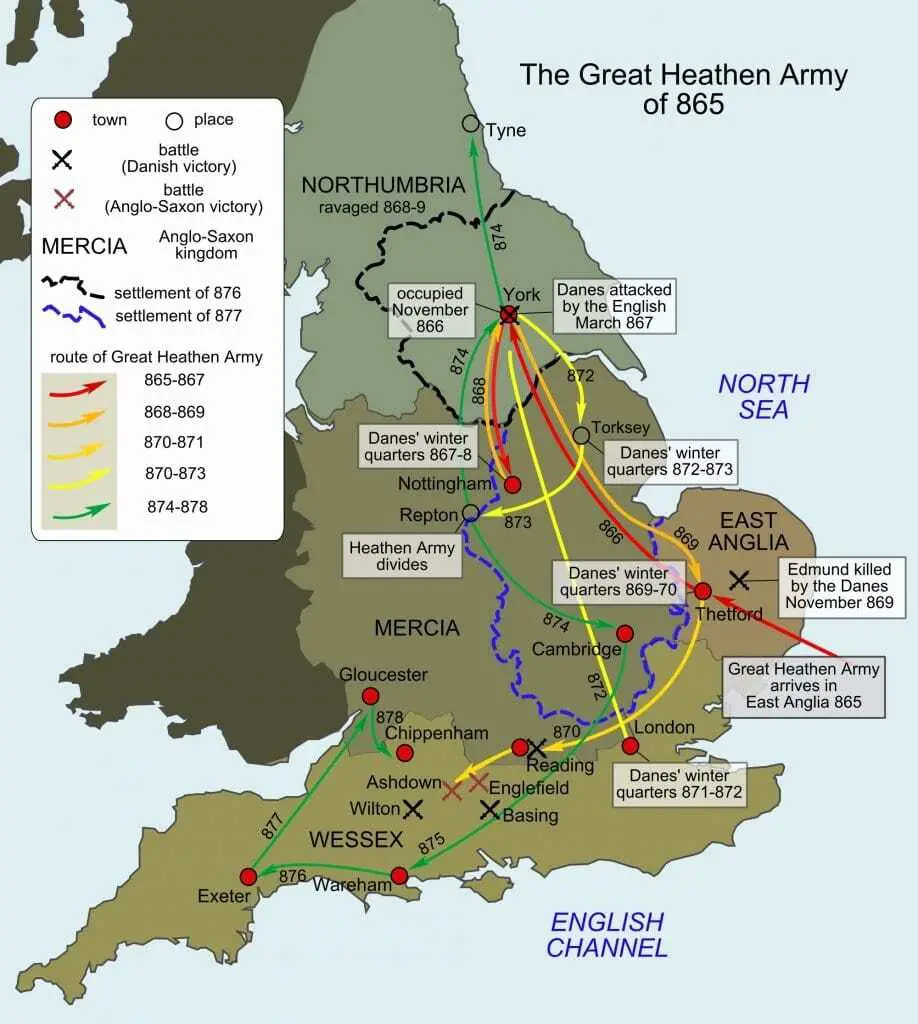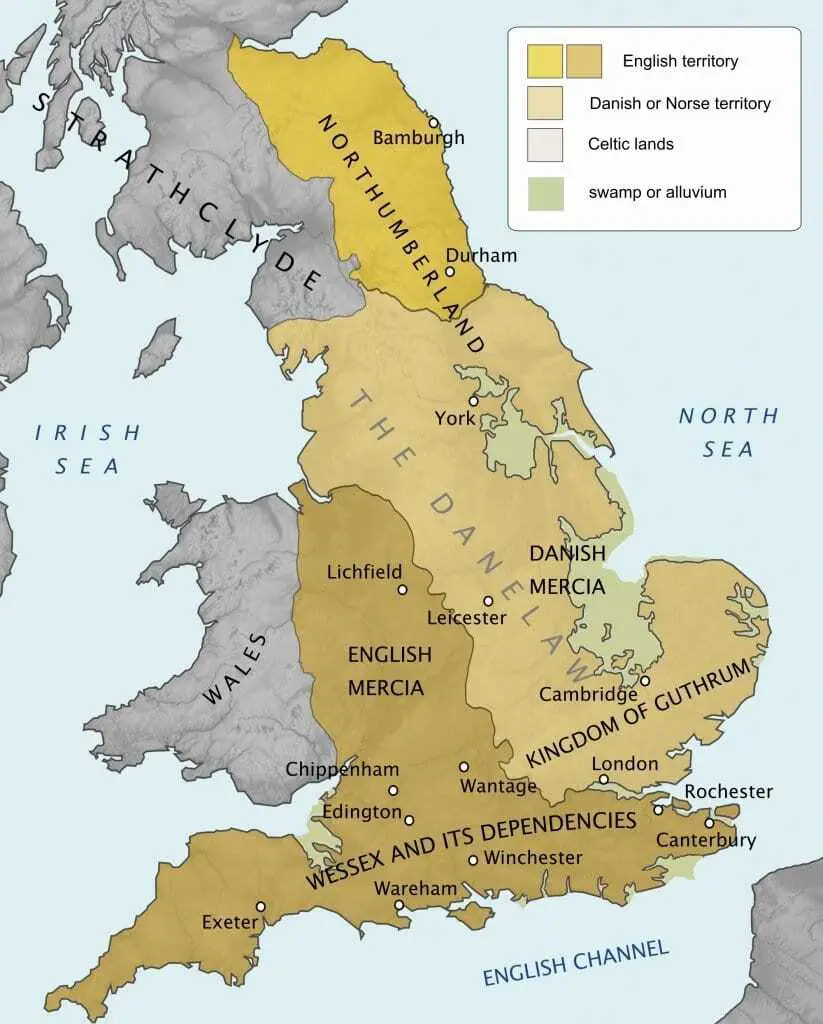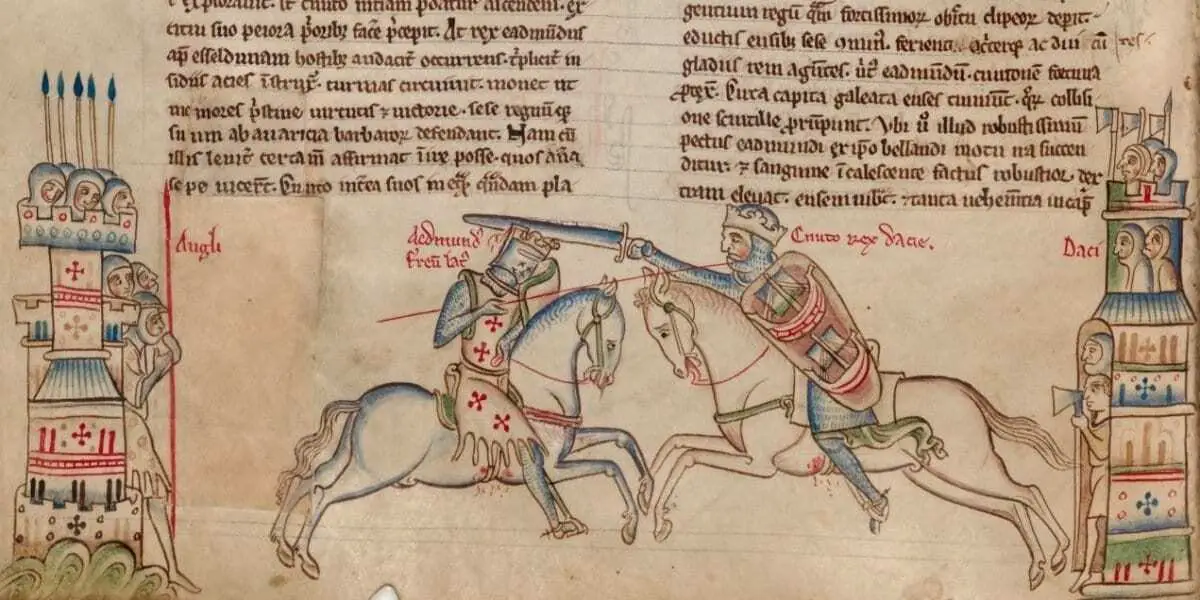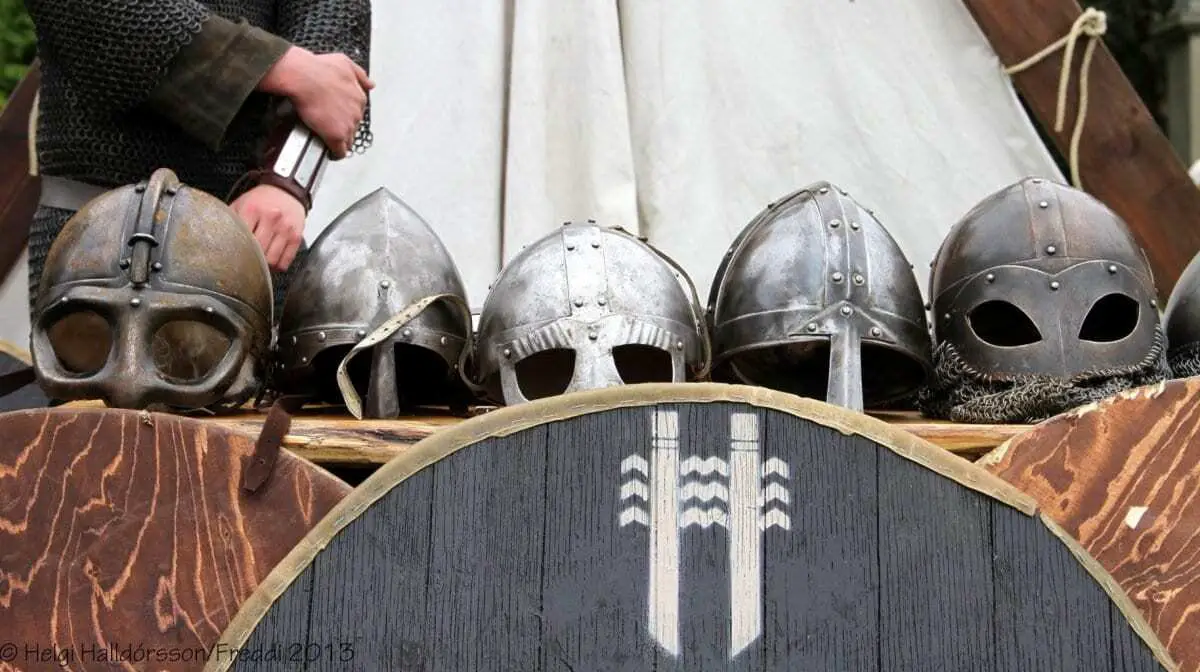London is generally associated with the Romans, Saxons and Normans, but a lesser known part of London’s history is intertwined with that of the Vikings.
When the early Anglo-Saxons settled in the area, they established a settlement that later become known as Ludenwic. This settlement was sited 1.6 km’s from the ruins of Londinium, the Roman city (Named Lundenburh in Anglo-Saxon, to mean “London Fort”).
By around 600, Anglo Saxon England was divided into several small kingdoms known as the Heptarchy. Lundenwic came under control of the Mercian Kingdom in about 670, as the Kingdom of Essex became gradually reduced in size and status. After the death of Offa of Mercia in 796, it was later disputed between Mercia and Wessex.
By the 8th century, Lundwic was a prosperous trading centre, both by land and sea. The term “Wic” itself means “trading town” and was derived from the latin word Vicus. So Lundenwic can loosely be translated as “London Trading Town.”
Lundenwic was rediscovered by archaeologists in the 1980s, with more recent excavations unveiling a town that covered around 600,000 square meters, or 6,500,000 sq ft, stretching from the National Gallery today to Aldwych.
Such prosperity and wealth didn’t go unnoticed. London suffered numerous Viking attacks, which became increasingly common from 830 onwards. A raid in 842 was described (loosely translated) by the Anglo Saxon Chronicle “… there was great slaughter in London … ”
Lundenwic was attacked again in 851, where another raiding party, reputed to have 350 ships came to plunder the city.
“ … came three hundred and fifty ships came into the mouth of the Thames; the crew of which went upon land, and stormed … London … ”
Viking Invasion : Great Heathen Army
In 865, the Viking “Great Heathen Army” (Anglo-Saxon Chronicle of 865) launched a large scale invasion of the Kingdom of East Anglia. They marched through England, conquering Mercia, Northumbria and controlled most of Anglo Saxon England.
By 871, the Vikings had turned their attentions south and reached London, having camped over winter within the old Roman walls of Londinium. The Anglo Saxon Chronicles are unclear as to what exactly happened during this period, but it’s likely that such close proximity to Lundwic would have meant Viking occupation and control for the inhabitants.

The tide turned in 878, when forces led by Alfred the Great defeated the Vikings at the Battle of Ethandun (Scholarly consensus identified its location with the present-day Edington in Wiltshire) and forced a peace agreement. Various treaties that followed led to the dividing of England into territories called Danelaw (Under Viking rule) and the Anglo-Saxon lands.

London was eventually restored to Anglo Saxon rule in 886. The town of Lundenwic was largely abandoned and the settlement re-established within the Roman walls of Londinium. Lundenwic gained the name of Ealdwic, ‘old settlement’, a name which survives today as Aldwych.
This new fortified settlement of London was named Lundenburgh (A burgh meaning “fortified dwelling place”) and formed a collective defensive system of “burghs” and fortified towns.
Within ten years, Alfred the Great had repaired the Roman walls, recut the defensive ditch (Roman fossa that encircled the walls of Londinium) and laid out the beginnings of the present day City of London. These boundaries today are still defined by the London Wall Road and ruins of some of the historic city walls.
Viking Invasion by Sweyn Forkbeard
Peace reigned for London into the 10th century, until Viking attacks were once again continued by Sweyn Forkbeard of Denmark in 994. During this time, Æthelred II (Æthelred the Unready) was the Anglo Saxon King and favoured London as his capital.
According to the chronicles of John of Wallingford, Sweyn was involved in raids against England during 1002–1005, 1006–1007, and 1009–1012, to revenge the St. Brice’s Day massacre of England’s Danish inhabitants in November 1002. Historians have considered the massacre as similar to a large-scale ethnic cleansing of the Danes in England, a cleansing that was orchestrated by Æthelred the Unready.
As Sweyn swept across England, London was subject to a long Viking siege in 1013 and eventually capitulated to the Viking invaders.
King Æthelred sent his sons Edward (Ironside) and Alfred to Normandy, and retreated to the Isle of Wight, where he fled overseas in exile to seek support from his ally, the Norwegian king Olaf.
A Norse saga tells of a battle when King Æthelred returned to attack Danish-occupied London.
According to the saga, the Danes lined London Bridge and showered the attackers with spears. Undaunted, the attackers pulled the roofs off nearby houses and held them over their heads in the boats. Thus protected, they were able to get close enough to the bridge to attach ropes to the piers and pull the bridge down, thus ending the Viking occupation of London.
This story presumably relates to Æthelred’s return to power after Sweyn’s death in 1014, but there is no strong evidence of any such struggle for control of London on that occasion.
Viking Invasion by Cnut the Great
War loomed again, when in the summer of 1015, Cnut the Great, son of Sweyn Forkbeard set sail for England with a Danish army of perhaps 10,000 men in 200 longships. The invasion force was to engage in close and grisly warfare with the English for the next fourteen months.
After Æthelred’s own death in 1016, his son Edmund Ironside was proclaimed Kind by the “witangememot” (meeting of wise men). Whilst Edmund was away gathering forces to bolster England’s defensives against Cnut, London once again was subject to systematic sieges by the Viking forces but repelled.

London captured by treaty
During the Battle of Assandun on 18 October 1016, Edmund was defeated and ceded to Cnut all of England north of the River Thames. Accession to the reign of the entire realm was set to pass to Cnut upon Edmund’s death.
Edmund coincidentally died weeks later that led to Cnut gaining control of the remaining Saxon territories and London. His coronation to the throne of England took place in London on Christmas day that year.
Cnut maintained his power by uniting Danes and Englishmen under cultural bonds of wealth and custom, rather than by sheer brutality. The protection he lent against Viking raiders (many of them under his command) restored the prosperity that had been increasingly impaired in England.
Historian Norman Cantor has made the statement that he was “the most effective king in Anglo-Saxon history”, despite his not being Anglo-Saxon.
Cnut ruled England for nineteen years….
Header Image Credit : Helgi Halldórsson





